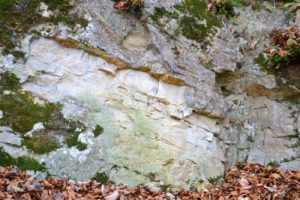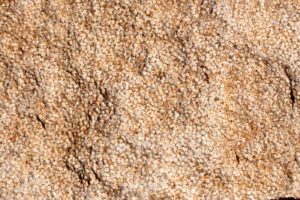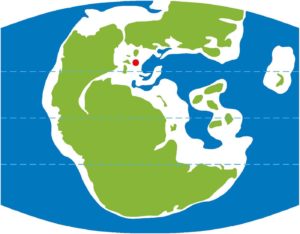7. Tropical conditions
Formation of the Ölberg
Old mines, where limestones had been extracted in former days, can be seen on the steep slopes of the north-eastern Ölberg. If you come close to the limestone, you will be able to realize that it consists of many tiny balls being no bigger than the head of a needle. Given the similarity with small fish eggs, also referred to as fish roe, this kind of limestone is called “Hauptrogenstein” in German (fish roe rock). This “fish roe rock” consists of marine sediments produced in the so-called Middle Jura up from about 177 to 156 million years ago, when the area of the Upper Rhine Valley was covered by a warm and shallow sea. However, the tiny balls of the fish roe are not any fossilized fish eggs. They had been formed by wave movements in the sea. Then calcium deposits formed around small grains of sand and were finally agglomerated with fine marine sediments.
It was about 45 million years ago, when the Rhine Basin collapsed and shifted downwards whereas the Black Forest and the Vosges uplifted. Some limestone plates, like Schönberg and Ölberg, formed the foothills area. In the time when the rivers were essentially higher than today, the limestone plates were formed by erosion whereby the natural caves and overhanging rocks on the steep east side of the Ölberg developed, too. These natural caves and overhanging rocks were used by the reindeer hunters as temporary housing 13000 years ago.


